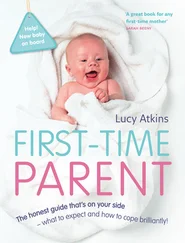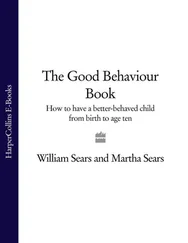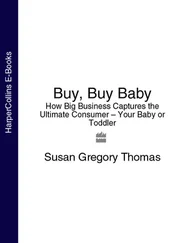Early musical training shapes children’s growing brains and boosts their learning power, aiding in the development of logic, abstract thinking, memory and creativity.Young children exposed to soothing music, especially classical with repeated patterns and rhythms, develop skills to master unrelated disciplines such as mathematics, engineering and chess because the same brain areas that appear to be stimulated are associated with temporal/spatial reasoning.
The influence of early environment on brain development is long lasting. When high-risk children entered educational programmes by six months of age, their incidence of mental retardation was reduced 80 per cent. By age three, these children had intelligence quotients that were 10-20 points higher than children of similar backgrounds who had not attended programmes. At age 12, these children still functioned at a higher level, and at age 15, the effects were even stronger, suggesting that early educational programmes can have long-lasting and cumulative effects.
Early stress has a negative impact on brain function. Negative experiences can have lasting effects because they can alter the organisation of the brain. Children raised in poor environments can display cognitive deficits by 18 months that may be irreversible. Children who enter preschool education at age three also show improvement, but they never appear to fully overcome what they lost in the first three years.
Parents and childcare providers need to be aware of what they could and should be doing to complement a child’s emerging stages of development. Stimulating a child properly is simple, but it takes time. Therefore a child needs both quality time and quantity time to build a positive attitude toward learning and life.
Both genetics and environment determine the brain’s architecture and potential. Automatic responses subside in early childhood; parents and childcare providers must provide the appropriate environment.
Understanding of infant brain development began in the 1970s. Studies showed that the brain develops the ability to interpret images only if it is stimulated during a brief period soon after birth. Without visual stimulation, a portion of the brain atrophies or is devoted to other tasks.
The developing human brain is receptive only to specific stimulation at certain times. If the optimum time is missed, it will take a child longer to learn that skill. Studies show that stimulated rats developed 25 per cent more neural connections than rats that were not stimulated.
A newborn infant has about 100 billion brain cells. The organisation of neurons is based upon sensory input. Each neuron is connected to up to 15,000 others to form a chemical-electrical labyrinth of incredible complexity so that an eight-month-old child may have 1,000 trillion synapses in his brain. These synapses must be used repeatedly or they will be eliminated or used for some other purpose. This winnowing process continues to about the age of puberty when brain wiring is complete.
Research has shown that the human brain consists of neurons (nerve cells) that analyse, coordinate and store information received through the senses. Most neurons have one ‘outgoing’fibre (axon) that sends signals to other neurons and many‘incoming’fibres (dendrites) that receive signals. At the end of the axon, this signal triggers the release of one or more neurotransmitters. These chemical messengers flow across the one-millionth-of-an-inch gap (synapse) between the axon and one or many waiting dendrites. The dendrites then translate the message back into electricity and rush it to the receiving neuron. Movement occurs at about 320 kilometres per hour and may be repeated up to 600 times per second.
Intelligence depends on the number of brain cells and the number of brain cell connections.
Brain growth occurs in spurts. Most visual brain connections are made by eight months. Speech patterns are usually impossible prior to 18 months. Learning language is totally dependent upon sensory input. Neural connections are established only for repeated sounds. Most young children can learn more than one language easily, whereas 10-year-old children learn with more difficulty.
Infants distinguish hundreds of spoken sounds and learn to recognise repetitive phonemes (the smallest unit of language, e.g., the ‘b’sound in ‘boy’) and demonstrate this awareness with vigorous sucking. As time passes, this potential fades as the brain is only wired to repetitive sounds. Initially, the correct way to speak to an infant is with short, simple, sentences using good voice inflection, but to avoid substituting the child’s name for the pronoun ‘you’. Parents should also speak frequently to babies in ordinary language used with adults with as many different words as possible. Television and radio sounds are perceived by babies as background noise and are not effective substitutes for parental interaction.
The sense of touch (e.g., stroking, hugging, kissing, feeling environmental textures) is crucial for proper brain development. Rat pups failed to thrive when deprived of their mother’s touch, but human surrogate stroking provided the required tactile stimulation. Appropriate human touch releases important human growth hormones, promotes brain-controlled functions like weight gain, motor skills and restful sleep while reducing stress or hyperactivity.
Visual stimulation (e.g., bright and contrasting colours, bold patterns and human faces) will promote motor dexterity and cement relationships. In an infant, the field of vision is narrow, the ability to refract light is minimal, and focusing of muscles is weak. A newborn sees colour, brightness and motion, but only hazy images. Depth perception, binocular vision and general acuity require time to develop.
Incorrect or inappropriate stimulation (e.g., yelling, rough handling, violence, fear, different care-givers or abuse) can create the wrong type of synaptic connections, making the brain forever susceptible to inappropriate responses (anger) and impulsive actions (violence). Such children have difficulty forming relationships, do poorly in school, often need special education, develop more behavioural problems, and are likely to use drugs and alcohol as teenagers. Neglect, or sustained lack of attention and affection, can cause erratic behaviour. Brains of severely neglected children show big black holes where the dense matter that coordinates affiliation, feelings and learning is supposed to be.
REMEMBER, THE BEST THING THAT PARENTS CAN SPEND ON THEIR CHILD IS THEIR TIME!
Clyde G. Oberlander
Introduction
Suggestions to help implement the activities
This handbook was written primarilyto bridge the gap between home and school. It contains weekly activities to correspond to the developmental patterns of each age group from birth to age five. There are 260 age appropriate activities that mainly use household items for materials. Explicit directions are written in layman’s language to ensure that people who use this book will understand howto implement each activity. A brief evaluation follows each experience so that the person will know what the desired outcome should be from each activity. Some activities may appear to be similar, but the intended concept for each activity is different. The title of the weekly activity and the evaluation of each should clarify any confusion.
There are parents who try to teach concepts or skills too early and consequently frustrate the child. They may present other concepts too late or not at all; therefore these parents have missed the optimum time to teach these concepts. Recent studies have confirmed that very early stimulation in young children gives them an enriched approach to learning, which produces better scholars in school; however, it must be done at the proper time.
Читать дальше












